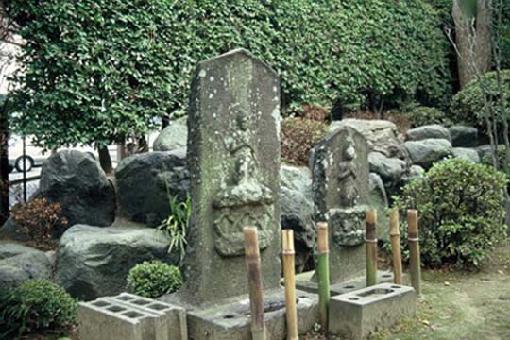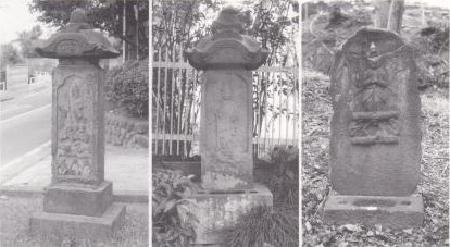Last updated: June 27, 2017

Koshin Pagoda in the precincts of Jorakuji Temple
On Kanoesaru Day, which occurs every 60 days, Kochu people gather at the house on duty, and after performing certain rituals, they eat and drink together all night, and at dawn The general form of Koshinko is to dissolve. This was a common people's faith that became popular in rural areas after the Edo period, and to commemorate the continuation of the Ko ceremony, the Koshin pagoda was built by the people of the Ko ceremony to hold a memorial service. Masu.
There are several ways of thinking about the original form of the Koshin faith. On the night of Koshin (Kanoesaru), the Sanshi insect inside a human body sacrifices its life in order to ascend to the heavens and tell the Emperor of the person's transgressions. There is an idea that Buddhism was added to the teachings of Chinese Taoism, which is said to be a religion, and an idea that it originated from Shinto, which is unique to Japan and predates Chinese Taoist thought. In any case, Koshin worship began to be practiced in aristocratic society during the Heian period, and seems to have spread to samurai society during the Kamakura and Muromachi periods. In the Edo period, it was worshiped in rural villages across the country, and pagoda construction became popular.
Let's take a look at Koshin Tower in the city.
There are currently 40 towers in existence, and chronologically, the oldest was in 1664, and it can be seen that the main period for building towers was until around 1800. Additionally, the location of construction often moves due to road widening, etc., making it impossible to clarify the characteristics of regional distribution.
The most common form of Koshin Tower is a square pillar (tombstone shape), followed by a Komagata shape, a boat shape, etc. Most of the main idols carved in the center of the Koshin Tower are Shoumen Kongo (blue-faced Vajra), and other statues such as Jizo Bodhisattva and other statues are not carved. There are some that are just letters.
The figure below shows the general shape of Koshinto. Blue-faced Kongo stands in the center, stepping on evil spirits, and the three monkeys, who are the messengers of Blue-faced Kongo, act with an attitude of reverence: see no evil, hear no evil, speak no evil. It is said to indicate. The sun and moon, representing the Himachi and Tsukimachi beliefs, and chickens are also carved.
Next, I would like to introduce Koshin Tower, which is a cultural property designated by the city.
The Koshin Tower, which is erected within the precincts of Ikoji Temple, was built in 1684 on a mountaintop near its current location, and was later moved to the precincts of Ikoji Temple. The stone-shaped tower with a hexagonal pillar and a hat is very rare, and its creator, Fujiwara Yoshinari, was the successor to Kato Tarozaemon Yoshinari, the hatamoto who ruled this area at the time. It is believed that there are very few examples of towers built by such feudal lords.

Koshin Pagoda of Ikoji Temple

The shape of a typical Koshin pagoda
| district | quantity |
|---|---|
| Yanoguchi | 9 |
| Oshidate | 1 |
| Higashinaganuma | 7 |
| Daimaru | 6 |
| 100 villages | 6 |
| Sakahama | 6 |
| Hirao | 5 |
| total | 40 |

Koshin Pagoda in the city
Inagi City Education Department Lifelong Learning Division Tel: 042-377-2121